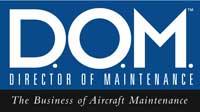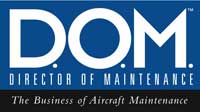
The Cost of Poor Quality


In the early 1960s, Ral Donner had a song called “You don’t know what you’ve got (until you lose it)”. I am aging myself when I can remember such things. They say the first thing to go is your memory, so it appears I am safe. This brings me to the point of this article and it’s not about 1960s Rock ‘n’ Roll — it’s about safety and quality.
I apologize in advance to all those reading this who possess an MBA. I was almost one myself so I know where your mind sits. It’s like the doctor who only studies the body’s systems, then only looks at a person as an biological mechanism. A person is a fallible being with an irrational brain that does not think like a machine. A business is made up of mostly people but you are taught in MBA school to look at a business as a mechanism. It’s more than that. I find it odd that few graduate business schools require courses in quality and safety systems or human behavior.
If you have been around quality professionals for any length of time, the topic of the “the cost of quality” or, more accurately termed, “the cost of poor quality” will come up. Quality and safety are partners and are interlinked. When one is weak or strong, so goes the other.
Upper management is pleased when you have a robust safety and quality system and see the trends going in the right direction. They see the value and worth, therefore they retain those systems. But what if a successful span of reduction in safety and quality-related issues is met with a plateau? What’s the worth then? In the numbers-related mind of upper management, it looks like safety and quality have done their jobs but have also run their courses. Safety and quality now take on the appearance of big expenses. As a manager, what have you been taught to do with expenses? You reduce expenses, so you get rid of the safety and quality oversight. Now you are running increased profits due to lower cost and you look good to your superiors. Everything is working smoothly … for a while.
Real-world examples
The inspection department at a major airline was reduced to three inspectors for 500 technicians at a main maintenance hub. The reason given was that the mechanics should be building quality into their repairs and would be held accountable, therefore inspection was not necessary. This sounded good, but there is also that characteristic of human beings to contend with — we are fallible. Here is the perfect example of the marriage of quality and safety. Fortunately, the integrity of the mechanics was much higher than their management counterparts and they would not allow any item to go through their hands without being scrutinized by another set of eyes. They would insist that a certified inspector be used when the manuals indicated. This situation has recently been restored after the “retirement” of the maintenance manager.
Toyota, the once-great pioneer in quality operating systems, is not immune. In order to increase profits in 2005, the president of Toyota pressured the chief engineers (who were responsible for a product line throughout its entire sales life) to cut costs aggressively. They did so and production took priority over quality and safety. The chief engineers were also isolated and cut off from normal communication channels, leading to delays in gathering feedback of the ramifications of those cuts. This tactic lasted for five years until the president resigned. The bill for the cost of recalls and fines during this period was estimated to be $5 billion.
The computer industry is also susceptible. The one-time darling of the PC market, Dell rose rapidly to prominence. Around 2005, Dell started to run into stiffer competition and began to pursue lowering the price of its computers by emphasizing production and cost control. Because it used low-cost, subpar quality components, the Dell desktop PCs were riddled with faulty electrical components that were breaking down prematurely. A subsequent lawsuit against Dell revealed that employees knew that the computers were likely to fail because of the quality of the components. The cost of lawsuits and fixing faulty computers was estimated to be in the billions of dollars.
The tactics at the major airline, Toyota and Dell are great business models that became synonymous with efficiency, outsourcing and tight inventories. These tactics are taught at Harvard Business School and other top-notch management schools as paragons of business smarts — outthink the competition and improve earnings per share. (After all, that is the holy grail of business.) The problem is that they don’t work in the long run ... but, then again, business isn’t concerned with the long term. As long as the dollars are rolling in today, tomorrow is someone else’s problem.
Then there are the blatant disregards for quality and safety that have caused not only financial losses but losses of life. Examples include the Massey Energy mine disaster in West Virginia and environmental catastrophes such as the Deepwater Horizon explosion in the Gulf of Mexico.
Five warning signs
In the words of Stu Weisbrod’s article in the 2010 October issue of Quality Progress, Warning! Warning! Five signs quality is at risk in your organization, “…there is a constant drumbeat from financial analysts for improved corporate profit margins, with never-ending improvements to the labor productivity metrics tracked by companies. But when does an endless series of cost-cutting cycles, or related warning signs, lead to an inexorable decline in the quality of the products or services companies provide?”
Those five warning signs are:
1. Repeated cost-cutting cycles.
2. Operational signals ignored or delayed.
3. Aging equipment or degradation of maintenance services.
4. Direct cuts to quality or operational excellence personnel.
5. Elimination or outsourcing of customer assistance resources.
Let’s look at each one.
1. Repeated cost-cutting cycles. There is nothing inherently wrong with cutting waste. We want to run a lean operation but we also need fat to run our bodies. Do we have the resources to do our jobs? Those who reduce resources are often not knowledgeable of what is required for us to do our jobs. They look at numbers but business is run by people doing things, not numbers. The “do more with less” mantra is mindless adherence to management principles.
2. Operational signals ignored or delayed (like at Toyota and Dell). Burying your head in the sand isn’t going to make the problems go away, no matter how small. It doesn’t take much effort to hold a half glass of water in your hand with your arm outstretched. However, it gets more difficult with time. Even though the glass of water can’t weigh much, you begin having difficulty in holding your arm out. Small problems are the same way. If you don’t address them when they are small, they tend to fester and turn into big problems.
3. Aging equipment or degradation of maintenance services. We technicians know that periodic preventive maintenance on tools and equipment improves their reliability. This also holds true of the facility. I ran into an experienced quality systems auditor who said one of the first things he did when he got to a facility is to use the employee’s rest room. If the rest room was unkempt, then it was likely that the safety and quality systems would be, too.
4. & 5. Direct cuts in quality and operational excellence personnel, and elimination or outsourcing of customer assistance resources. This impacts the customer almost immediately. The same major airline that I mentioned previously also figured that since airline passengers were doing everything online from making reservations to checking in and printing their boarding passes on their own, why did they need reservation staff? Once the reservation staff was gone, complaints rose dramatically that there was no person to talk to for assistance. In another brilliant move, they decided to outsource that process. Now you had a person to talk to but you couldn’t understand them. Looking at it from the airline’s point of view, it would appear that there is no pleasing the customers. Customers wanted a person and they supplied a person. The customer didn’t stipulate they had to actually communicate with each other. Customers are rude — they should be thankful that we are selling them a seat on our airline and shut up. Does that sound like professional arrogance? It creeps up on you, doesn’t it?
Lessons learned
The cost of poor quality and poor safety can be counted in loss of money, reputation and lives. Even if you don’t understand the ramifications of your actions, a prudent person should stop and think, “If I am going to err, I better err on the side of safety.”
Another case in point is mergers and acquisitions. They have been predominantly successful in a financial sense but have a 90-percent failure rate in achieving their targeted goals. The main reason is failure of the financial people to understand that they are merging more than books and combining numbers; people are involved and people do not equate to numbers well. This variable is the No. 1 contributor to the 90-percent failure rate. Delta and Northwest Airlines are now just Delta Airlines, but in talking with their people they refer to Delta North and Delta South. United and Continental Airlines, same thing — they still refer to themselves as United and Continental and even United’s own employee Web site displays internal job openings for Continental employees separate from United employees. These do not sound like merged companies to me though they have been blessed with that distinction from the FTC. They operate as one company. Excuse me while I choke on my own words.
The big business schools still like this numbers approach to business. It makes fiscal sense but economic disaster, so it appears that the lesson has yet to be learned.
 Patrick Kinane is an FAA certificated A&P with IA and commercial pilot with instrument rating with 50 years experience in aviation maintenance. ASQ Senior Member with Quality Auditor and Quality Systems/Organizational Excellence Manager certifications; RABQSA certified AS9100, AS9110, and AS9120 Aerospace Industry Experienced Auditor and ISO9001 Business Improvement/Quality Management Systems Auditor. Academically earned BS in Aviation Maintenance Management, MS in Education, and PhD in Organizational Psychology. He is principle owner of PlaneQA LLC and professor at DeVry University.
Patrick Kinane is an FAA certificated A&P with IA and commercial pilot with instrument rating with 50 years experience in aviation maintenance. ASQ Senior Member with Quality Auditor and Quality Systems/Organizational Excellence Manager certifications; RABQSA certified AS9100, AS9110, and AS9120 Aerospace Industry Experienced Auditor and ISO9001 Business Improvement/Quality Management Systems Auditor. Academically earned BS in Aviation Maintenance Management, MS in Education, and PhD in Organizational Psychology. He is principle owner of PlaneQA LLC and professor at DeVry University.
